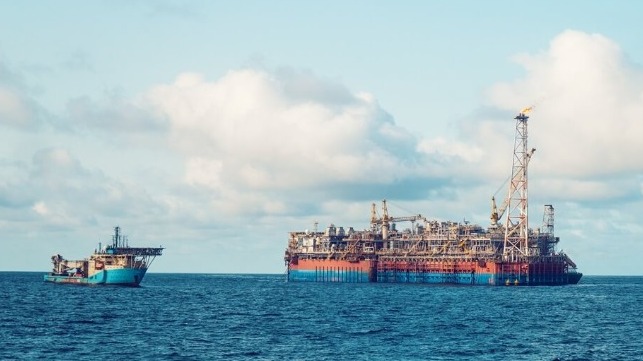Advancing Offshore Decarbonization Through Electrification of FPSOs

The marine and offshore sectors have an important role to play in driving a successful energy transition. In recent years, significant progress has been made by operators and original equipment manufacturers (OEMs) to decarbonize operations through engine efficiency improvements, the use of alternative fuels and alternative energy etc. Electrification initiatives have also expanded across many vessel types, including passenger ferries, tug boats, Offshore Support Vessels (OSVs) which can include Platform Supply Vessels (PSVs), Crew Transfer Vessels (CTVs) through to drilling rigs, etc.
ABS has supported industry electrification efforts by publishing important guidelines and requirements for offshore energy generation and distribution, battery energy storage system, fuel cells, and hybrid electrical power systems. We are now taking the next step on our roadmap by exploring how electrification technologies and concepts can be applied to accelerate decarbonization of Floating, Production, Storage, and Offloading (FPSO) vessels.
Decarbonizing offshore oil and gas production
FPSOs have fundamentally transformed offshore oil and gas production over the last two to three decades by allowing operators to exploit reserves in deep and ultra-deep waters and highly remote locations. Their flexibility and adaptability overcome many of the limitations of traditional fixed structures, opening up offshore field development opportunities across the globe that were once considered economically unviable.
While operators, engineering firms, and OEMs have made strides to reduce the carbon footprint of modern FPSOs in recent years, pressure to curb greenhouse gas (GHG) emissions continues to mount. The FPSO sector will be responsible for an estimated 38 million tons of CO2 emissions in 2023, and nearly 50 million tons by 2030 unless steps are taken to curb Scope 1, 2, and 3 emissions (Rystad Energy).
In certain regions of the world, such as the North Sea, carbon intensity per barrel of oil produced has become a determining factor in whether field development projects reach final investment decision (FID). It is plausible that this will eventually be the case in other offshore producing regions of the globe, including the Gulf of Mexico (GoM) and South America.
FPSO electrification
Among all options, electrification represents the most practical and feasible path forward when it comes to FPSO decarbonization.
Several FPSOs under development have embraced electrification strategies in recent years. However, the sheer complexity and power demand of these facilities (typically anywhere from 80 – 150 MW), along with substantial requirements for process heat make electrification a much more challenging task when compared to smaller marine vessels.
The majority of emissions generated on an FPSO originate from gas turbine generators (GTGs), which provide electricity to various onboard operations. In many cases, waste heat from the GTGs also serves as a source of heat for processing systems. Diesel generators are often used for auxiliary power and for backup in emergency (i.e., black-out) situations. The first step in decarbonization is using the GTGs more and diesel generators less, with a goal to reduce the number and size of the diesel generators.
Significant emissions reductions are possible by augmenting power generation from GTGs with alternate sources, such as offshore wind or power from shore if the FPSO is within a reasonable distance to land. Doing so allows for the use of fewer GTGs with rated capacities that are optimized for the electrical requirements of the facility, resulting in a power plant with higher fuel efficiency.
Even marginal increases in efficiency can have a substantial impact on the facility’s carbon footprint. For instance, a 1% fuel efficiency increase of an FPSO power plant utilizing four 30MW aeroderivative GTs to meet an 80MW power requirement can result in the avoidance of around 6,500 metric tons of CO2 per year (Siemens Energy).
Harnessing clean energy sources also introduces the possibility of implementing new power plant redundancy schemes by eliminating the requirement for diesel generators. The intermittent nature of renewables does mean this would likely require the addition of an energy storage system (ESS), such as lithium-ion batteries, supercapacitors, flywheels, etc. to ensure continuous power. Hybrid (i.e., diesel/gas-electric) power systems with lithium-ion batteries have been successfully applied on several types of vessels, including PSVs, LNG carriers, offshore drilling rigs, etc.
Similar concepts are being implemented that feature batteries integrated within the column of offshore floating or fixed wind turbines. In such cases, multiple floating units can be tied together to form an offshore microgrid that is capable of supplying clean, stable power to one or more offshore assets, thereby reducing the duty on conventional generating assets. The wind units could also be equipped with necessary systems to enable smaller electric or hybrid vessels to charge their batteries and reduce the number of trips to shore.
Hybrid power concepts have already shown promise when applied to smaller assets like drilling rigs. However, given the extremely demanding requirements for reliability and production uptime on FPSOs, more work needs to be done to define requirements and develop guidelines that minimize the risk of their application.
ABS electrification workshop
ABS is committed to supporting the offshore industry’s electrification initiatives and has published several Requirements and Guides for energy storage systems, hybrid power systems, offshore substations and electrical service, offshore charging systems, power shore connections etc.
Recently, we held an offshore electrification workshop attended by an international forum of oil companies, designers, equipment suppliers, and many more industry leaders to better understand the challenges associated with FPSO electrification and answer important questions, such as:
- How do we maintain the same level of support for essential services in terms of reliability, availability, and single point of failure tolerance?
- What does the owner/operator and ABS need to know about the source of power and the ongoing status of the source of power?
- Is the source of power a part of a classed installation?
- Where do scope boundaries lie for differing safety and technical standards?
- What are potential points of failure (turrets, swivels, cable routing, etc.)?
The workshop proved to be a productive event. Participants were in broad agreement on the need to advance technologies for offshore electrification, including connections for offshore and onshore renewable energy sources, ESS, and charging systems. Multiple respondents also cited nuclear as a technology that should be considered for offshore power generation.
Nearly two-thirds of respondents cited financial constraints and obtaining a reliable electrical supply as the primary hurdles to offshore electrification. Other notable responses were a lack of a standardized interface for offshore power and low infrastructure readiness, as well as performance and space constraints.
More than half of workshop participants said that the source of power generation should not fall within the regulatory scope if it is located outside of the vessel. However, the overwhelming majority believed that the interface to the external power supply should be included. Responses on potential failure points were mixed, with several participants citing high-voltage transmission lines and subsea cables. Personnel training also emerged as a concern.
Sustaining momentum
Achieving carbon neutrality in the marine and offshore sectors will require contributions from a broad range of technologies. While the use of alternative fuels and carbon capture, utilization, and storage (CCUS) has an important role to play, electrification is the most practical solution for decarbonization, and this will likely remain the case as renewable generating capacity increases.
Overall, momentum to electrify vessels, including FPSOs, continues to build. However, the industry still faces headwinds, including high upfront costs, a lack of supporting infrastructure and properly trained personnel, and gaps in technical and safety standards. The latter is a task that ABS is committed to solving by working closely with stakeholders to ensure that risks of technology implementation are adequately understood and addressed, including the development of Rules and Requirements that help to better support FPSO electrification.
 Matthew Tremblay serves as ABS Senior Vice President of Global Offshore Markets, based at ABS Corporate Headquarters in Houston. In his current role, Mr. Tremblay holds the global responsibility for strategic planning and client development within the offshore market sector.
Matthew Tremblay serves as ABS Senior Vice President of Global Offshore Markets, based at ABS Corporate Headquarters in Houston. In his current role, Mr. Tremblay holds the global responsibility for strategic planning and client development within the offshore market sector.
The opinions expressed herein are the author's and not necessarily those of The Maritime Executive.
